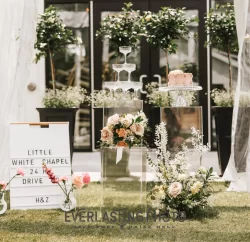An original, Kanchipuram pure silk saree is expensive, but the price is well worth its stupendously fabulous looks! It should be examined for its authenticity every time.
Women across India dream of owning at least one expensive Kanchipuram saree, for use during formal and grand social events! While all this is fine, the snag is that several fraudsters have been tempted to offer duplicates in the marketplace for quick profits. Surprisingly, these duplicates give the impression of similar resplendence, beauty and quality, as the original sarees. Therefore, use the following tips to distinguish the authentic from the fake.
Observe the Silk Mark Label
Do you know where these Kanchipuram sarees originate? Well, they come from the town of Kanchipuram in Tamil Nadu. It has a small population of weavers who slog to produce one of the best silks in India. In fact, the Kanchipuram silk saree industry is worth a whopping $20 million and more, today!
Bearing these facts in mind, do you honestly think it possible to purchase a pure silk saree for a mere INR 8,000, or even lesser? The pricing definitely has to go much higher! Therefore, whenever you pick up a saree at a big/small shop, look for the Silk Mark label on it. The Silk Board of India has ordered this label to go onto every pure Kanchipuram silk saree across the country.
Check the Zari Threads
Every saree will have some zari threads hanging loose at the ends. Pull them. Do the silk threads appear white? Alternatively, do they display some other colour, barring red? If your answers are in the affirmative, be sure that you are purchasing a duplicate Kanchipuram saree!
Pure zari comprises of red-coloured silk threads, which weavers twist with another pure silver thread. Then, they dip the bunch into a solution of 22-carat pure gold. Now, do you understand why the designs on the saree glitter like gold?
In case, you have already bought a silk saree at Kanchipuram, approach the Zari Test facility there. By paying a nominal fee, you will be able to discover if your saree is authentic or a fake.
Note the Border of the Saree
If you observe every pure silk saree, you will notice that the border’s design and hues contrast sharply with the same on the body. This is the beauty of a typical Kanchipuram saree!
As mentioned earlier, pure zari refers to silver threads dipped in a pure gold solution. This is why the saree is so expensive. In contemporary times, several weavers are going in for tested zari. Here, copper wire, which has been electroplated with silver, comes into play. This is in place of pure silver threads. Naturally, it becomes possible to reduce the quantity of pure silver while making the saree. In turn, this reduces the price of the saree in the marketplace. Therefore, if you are keen to adhere to originals only, observe the colour of the zari work, when tested zari has been used. It will definitely not be red!
Conduct the Burn Test
To begin with, pluck out a few threads from the warp and weft (longitudinal and transverse threads). Next, burn them. After they burn completely, you will find a ball of ash in their place. Take the ball of ash in your hand, rub it, and smell it. Does the odour resemble burnt leather or burnt hair? If the answer is ‘yes’, then you have purchased a genuine Kanchipuram silk saree.
An imitation saree’s threads, made from artificial fibres, will not leave ashes behind when burned. You will just notice a flare, which is all!












